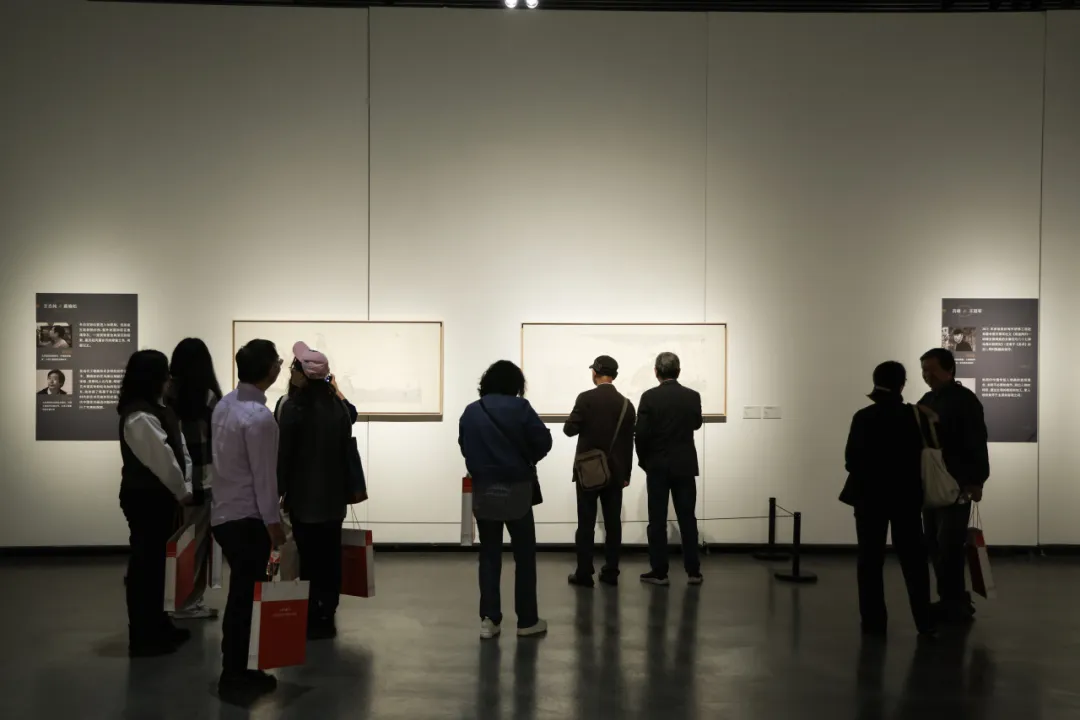
The 2025 Beijing-Shanghai Painting Academy Painters Exchange Exhibition has begun. On April 22, "The Birth of a Painting: Point Painting - Beijing Painting Academy Painters' Works Exhibition" was held at the Cheng Shifa Art Museum of Shanghai Chinese Painting Academy. The exhibition presented 65 pieces (sets) of works by 28 artists from the Beijing Painting Academy. At the same time, the concept of "point painting" was used to invite well-known critics to conduct "one-on-one" research and comments on the painters' works.
The Shanghai Chinese Painting Academy and the Beijing Painting Academy are the earliest painting academies established in New China. The two academies have a profound historical origin and a deep emotional foundation. The two academies have worked together to continuously plan a number of large-scale exhibitions and academic activities, which not only showcased the fruitful achievements of the two academies in artistic creation, but also promoted the collision and integration of creative concepts between artists from the north and the south. Since 2023, the two academies have jointly established a painter exchange exhibition mechanism to promote artistic interaction and innovation, injecting new vitality into art creation and inter-museum exchanges.
What is "point painting"? In 2020, the Beijing Painting Academy launched an exhibition with the theme of "The Birth of a Painting", which toured the country and published a picture album of the same name. In 2021, the Art Department and Theoretical Research Department of the Beijing Painting Academy proposed the upgraded concept of "Point Painting Collection", inviting critics to participate in the research of the academy's painters on a "one-to-one" basis. The painters first provided their more satisfactory representative works, and then the critics selected five works from their own perspectives for comment and made a comprehensive evaluation of the painters.
Wu Hongliang, president of the Beijing Academy of Painting, said: "This unprecedented collective presentation of 'pointing out the generals' is a challenge for both painters and critics, but it also makes them excited, making the event rich and full as a whole."

Exhibition site
At the exhibition, we can see the colorful and distinctive creations of the painters of the Beijing Academy of Painting. The critics’ scrutiny and interpretation are presented to the audience in a vivid and rigorous manner. The back-and-forth “dialogue” makes the audience feel involved.

Guo Baojun, Pious Practice No. 2, ink and color on paper
The work "Pious Practice II" by Guo Baojun, Vice President of Beijing Academy of Painting, selects typical moments in the life of Tibetan compatriots, depicting the spirit and belief of repetition and endless life. Cheng Dazhao, a member of the Central Academy of Literature and History and Vice President of the Chinese Painting Society, commented on the work: "The conception is simple but rich in connotation, and the painter's aesthetic cultivation and humanistic accumulation are fully expressed in the work."

Mo Xiaosong, Studio Fun No. 1, ink on paper
Mo Xiaosong captured the vitality of the winter outside his studio in the suburbs of Beijing. Outside the window, the withered wormwood and reeds are brown and gray, and the deep brown and purple are in the decay, which is the heavy color of the years. Wang Zhichun, consultant of the Art Committee of Beijing Painting Academy, commented that "In the diverse creative pattern of contemporary fine brushwork, Mo Xiaosong's flower and bird paintings are characterized by delicate emotional experience, profound humanistic connotation, bright and exquisite artistic language and relaxed technical expression. He has created an artistic style and formal language that belongs to both himself and the new era, and has made valuable explorations for contemporary Chinese flower and bird paintings to reach a new peak of the era."

Lei Bo Trace-5 Mixed Materials
Lei Bo admires the cultivation of traditional Chinese literati and hopes to move freely between Eastern cultural elements and Western expression methods. He uses oil paint to express the connotation of traditional Chinese civilization. Wan Shaojun, deputy secretary-general of the Chinese Oil Painting Society, commented that "Through dozens of sketches and copies of the Grottoes and Kaihua Temple, Lei Bo has quietly completed the integration of Chinese and Western art methods."
On the opening day of the exhibition, painters from the two art academies and experts in the cultural and art circles discussed the meaning of the theme of this exhibition, "Dot Painting".
Beijing Painting Academy painter Le Xianghai mentioned that Beijing Painting Academy has strengthened its research capabilities in recent years, involved in the research of painters themselves, and really went to the painters' studios to present the true state of their creations, reflecting that the painters themselves are representatives of Chinese culture and Chinese art, and the uniqueness of the painters of the painting academy. Tang Zheming, a part-time painter of Shanghai Chinese Painting Academy, Zhang Lixing, vice chairman of the Shanghai Association of Literary and Art Critics, and Bao Ying, a painter of Shanghai Chinese Painting Academy, also spoke based on their own research and creation.

Wang Guanjun, Draft of the Light of Life (partial), ink on paper

Luo Min People's Park in Autumn Oil on Canvas
According to Jiang Peng, Party Secretary and Vice President of Shanghai Chinese Painting Academy, in two months, the exhibition of works by young and middle-aged painters from Shanghai Chinese Painting Academy will also be exhibited at Beijing Painting Academy.
"The Birth of a Painting: Dot Painting - Exhibition of Works by Painters from Beijing Academy of Painting" will be on display in Shanghai until May 11.